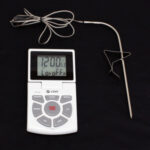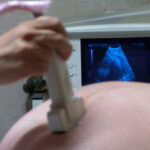I am an Echocardiographer, which means I perform Echocardiograms as a profession. I often get the question: What is an Echocardiogram?
Simply put, an Echocardiogram is an ultrasound of the heart. Most people understand the concept of how an ultrasound works: A medical sonographer places an ultrasound probe against your skin and takes pictures of soft tissue in your body.
Every organ can be viewed with ultrasound. The heart is no exception. As with all ultrasounds, a live picture of the functioning organ is obtained.
The heart is constantly in motion. It takes a steady hand and a knowledgeable Sonographer to get good information for the reading doctor. Typically the reading doctor is an echo trained Cardiologist.
An Echocardiogram gives information on many different heart functions:
1. Wall motion. A heart is fed oxygen and blood through coronary arteries. If an artery becomes blocked, blood and oxygen no longer feed the section of heart muscle downstream of the blockage. As a result the heart muscle in this area will become damaged. It won’t move normally. This is what occurs during a heart attack. This abnormal wall motion can be seen with an Echocardiogram.
If a Cardiologist sees abnormal wall motion on an Echocardiogram, they will probably consider taking a closer look at the coronary arteries with an Angiogram.
2. Valve function. There are 4 heart valves. All of them can be seen and interrogated with an Echocardiogram.
The valves open and close when pressures within heart chambers change. For instance: when the left atrium, which is the upper chamber that receives blood from the lungs, fills with blood, it opens the Mitral valve which drains the blood into the left ventricle. When the left ventricle squeezes, it shuts the one-way Mitral valve and opens the Aortic valve.
Normally, heart valves are thin and mobile. An Echocardiogram can assess the valves for damage. It can see if the valves have become tight, or stenotic. If this has occurred the blood will travel through the valve faster than normal. A Sonographer can measure the velocity and calculate how tight the valve has become.
Echocardiograms can also assess valves for leaks. It’s not unusual for heart valves to leak mildly. It is abnormal if the valves leak excessively. A skilled Sonographer can evaluate leaky heart valves and pass this information to the reading Cardiologist.
3. Fluid around the heart. An Echocardiogram is also able to assess whether or not there is an excess amount of fluid around the heart. It’s natural to have a tiny bit of fluid in the pericardial sack. The pericardial sack surrounds the heart, and the fluid acts as a lubricant for the pumping action of the heart.
Sometimes, through disease process, the fluid in the pericardial sack becomes excessive. Too much fluid around the heart can cause problems. An Echocardiogram can easily see the fluid. An accurate measurement is obtained and the Cardiologist can decide the best method for removing it.
Typically an Echocardiogram takes about 30 minutes. The Sonographer will have you lying on your left side. They will take pictures from your mid chest, the left side of your lower rib cage, under your sternum and under your chin.
Each of these images looks at the heart from different angles. The final picture under your chin is actually looking at your aorta as it comes out of the heart.
Echocardiograms are very useful for assessing a patients’ heart. They are non-invasive, quick and provide a lot of information for the reading Cardiologist.



